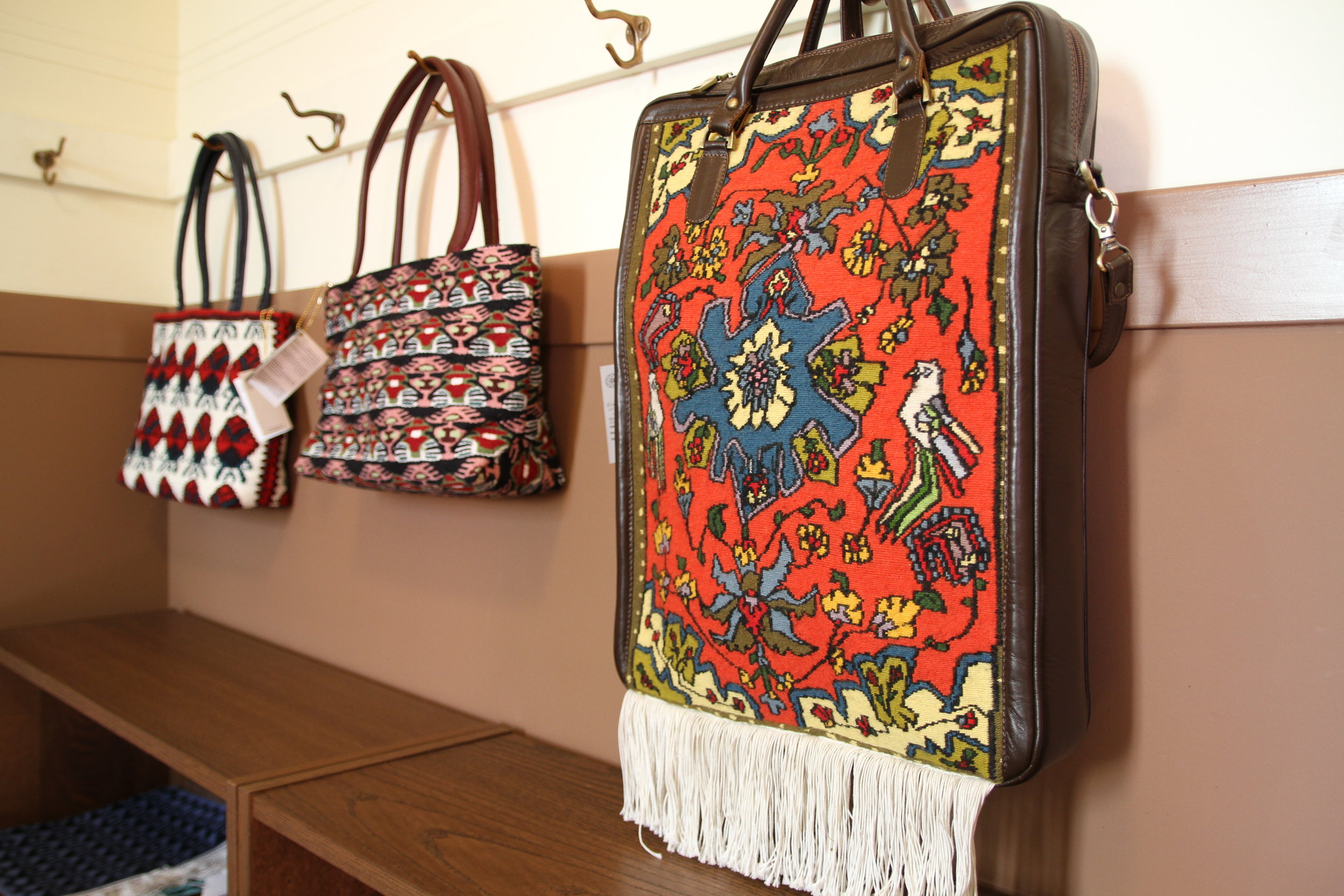Shaghayegh Cyrous
Klozar Weaving Project
Exhibition: Oct 29th-Nov 28th
Opening reception: Nov 1st 6-8pm
The Klozar Weaving Project started officially in 2014 by Shaghayegh Cyrous and Soheila Moayed Jafari, a mother and daughter living separately in the United States and Iran. The project is focused on supporting the women who are weaving the kilims and rugs in Iran by paying them higher than average wages. Additionally, the practice of hand weaving rugs and the traditional patterns from each family are passed on to future generations. This project was denied by the Iranian government for many years, seized by the US government for four months, then finally stopped in the middle of the Iran-US nuclear deal. Radioactive Rugs is a multimedia installation that transports you to explore the political barriers and journeys of this project.
Klozar Weaving (KW) is an organization aimed at supporting women weavers residing in the rural areas of Iran, such as Kurdistan, Sanandaj, Bijar, Hashtgerd, Eslam shahr, Tehran, and Nezam Abad. Through supply and distribution of these high quality crafts, Klozar creates a market for craftswomen whose art is at the edge of deterioration. KW was founded by Soheila Moayed Jafarie and Shaghayegh Cyrous in Hashtgerd, Iran in 2014. Soheila Jafarie hand picks the highest quality weaving and compensates the weavers twice the national average and they get commissioned before they start weaving.
Klozar Weaving has received many awards including the best cultural entrepreneur of Iran by cultural heritage of Tehran in 2015 and also nominated for a UNESCO award in 2015. KW keeps the hand woven industry alive because until now few were fighting to preserve this important artisan craft as many machines were taking over the work of hand weavers. KW brings back the traditional colors and patterns that were going to die out and re-purposes the weaving for a more contemporary use and introduction to the next generation.
KW is focused on changing the power dynamic between the product and weavers who are weaving the kilims and carpets. Each bag has its label identifying who made it and where they made it. The label also gives the name of the traditional design that has been passed down through their family for many generations, such as brides crown and apple blossoms. Most of these patterns are passed down to the next generation by a song that tells the weaver what pattern and color they should use as they keep singing and weaving.



